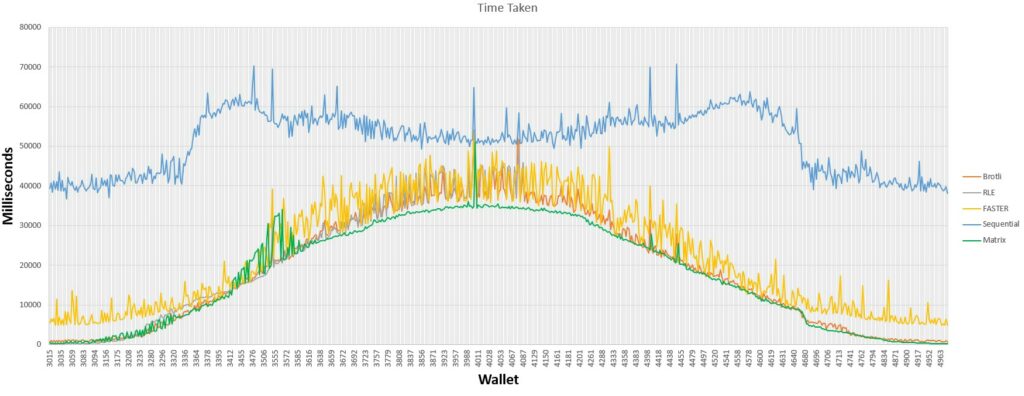Blockchain-based systems have emerged as a promising technology for managing and securing historical transactional data. However, as the amount of data stored in these systems grows, efficient indexing and querying methods become crucial for ensuring fast and accurate data retrieval. This study investigated the effects of different indexing and storage methods on the performance of blockchain-based systems when handling historical transactional data.
Traditional database systems such as SQL[1] and key-value stores[2] were compared with the said indexing system that could build the index directly from the block data. The experiments carried out demonstrated that the novel indexing system could significantly improve the performance of blockchain-based systems in terms of query response, time and accuracy. Moreover, the trade-offs between these methods were analysed in terms of storage space and computational overhead. The findings, as outlined in Figure 1, suggest that the above-mentioned indexing system could provide a viable solution for handling the increasing volume of historical transactional data in blockchain-based systems. Specifically, it was demonstrated that the novel indexing (as denoted by Matrix) system could reduce query response time significantly while maintaining a high level of accuracy, as displayed in both Figures 1 and 2.
In conclusion, the study sheds light on the importance of indexing and querying methods in blockchain-based systems, for managing and analysing historical transactional data. The findings suggest that alternative indexing and querying methods could provide a viable solution for addressing the scalability and performance challenges of blockchain-based systems, while offering more flexible and adaptive querying capabilities. These results have implications for various applications of blockchain technology, such as supply-chain management, healthcare, and financial services.

Figure 1. Searching for single transaction results

Figure 2. Searching for wallet transaction results
Student: Andrew Sharples
Supervisor: Dr Clyde Meli
